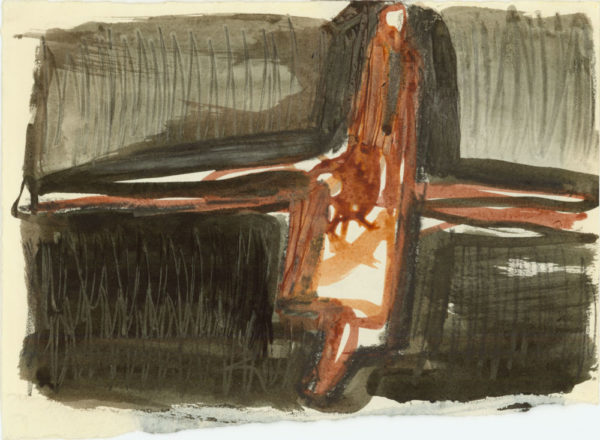Red is a color that should never be messed with, diluted, bastardized, cross-pollinated or otherwise appropriated, which calls into question the reason the color oxblood exists at all. If you cut open the belly of an ox, would the seepage of viscera reveal this sickly, mutant shade, like blood mixed with fecal matter? I imagine most ox would find this offensive.
Blood is a substance that commands seriousness and always holds our attention because without it, we are nothing. Literally, we are drained. Metaphorically, we are completely ineffectual. The color of blood is undeniable – simultaneously alluring and dangerous, and seeing it raw, alive and pulsating suggests the kind of visual experience one falls into completely, immersed from head to toe in its musculature and complexity.

Cindy Sherman, Untitled, (1989)
Which brings me back to the ox, more floridly known as a bullock, a bovine trained as a draft animal. In India, these creatures are revered, often bedecked in flowers and found traipsing the streets of Mumbai. It is true that some are brown, but many more are the deep and harrowing black of a stick of charcoal, or a warm ochre. Then there are those ghostly hides — a dirty shade of white. Each is a sacred beast, yet in our collective imaginations, an ox is almost always a dull and witless brown.

Francisco Goya, “The Third of May 1808″, (1814). Oil on canvas, 106″ × 137”.
Oxblood is burgundy without the sex appeal. Neither here nor there, it longs to seduce and be seduced, beef stew without the beef. It should only be worn at two in the morning on a Sunday and should generally be reserved for over-priced leather couches, your fathers’ favorite corduroy jacket circa 1977, car seat upholstery and well, a moldy toupee.

Caravaggio, “Madonna of the Rosary,” (1607). Oil on canvas, 143.5″ × 98.2″.


